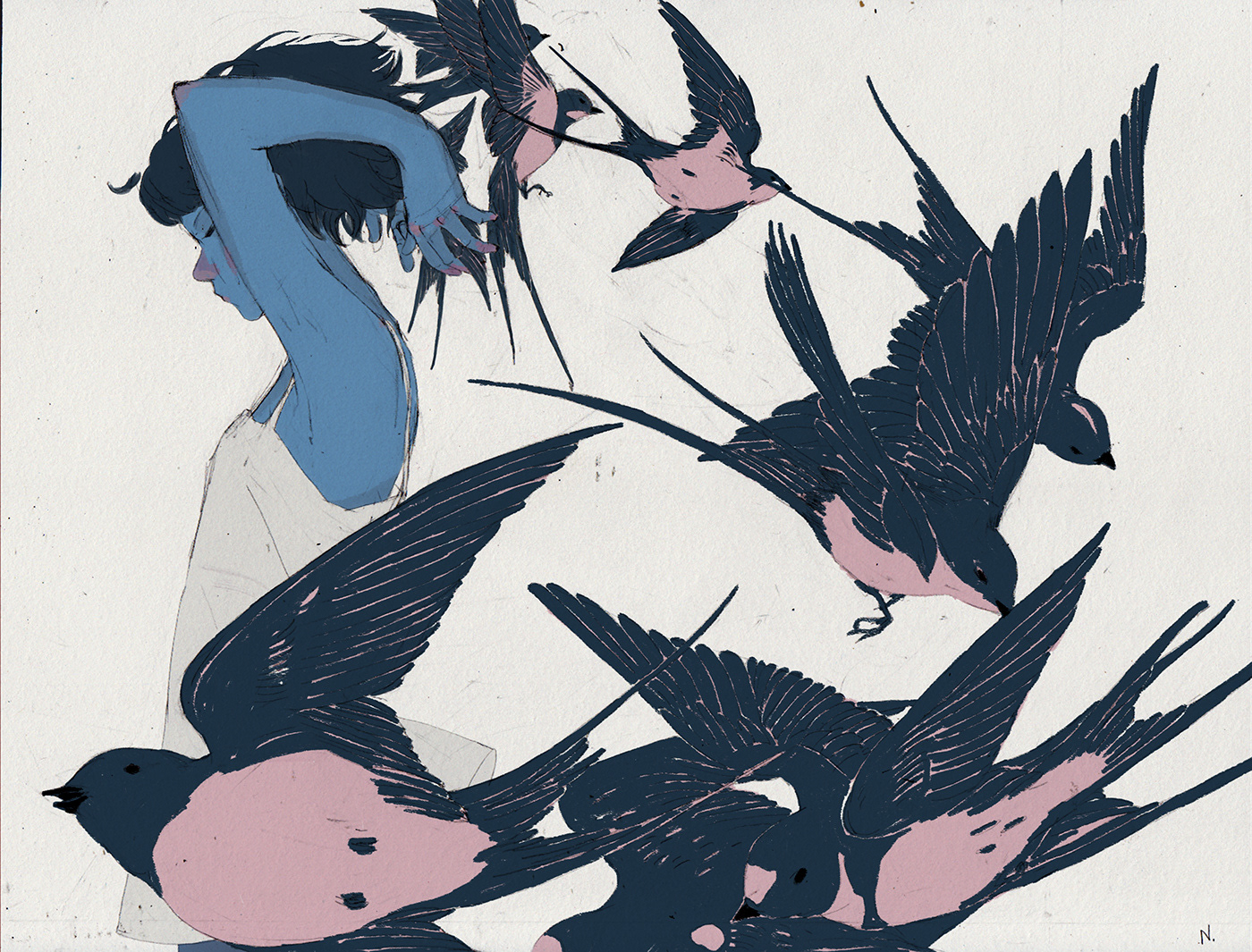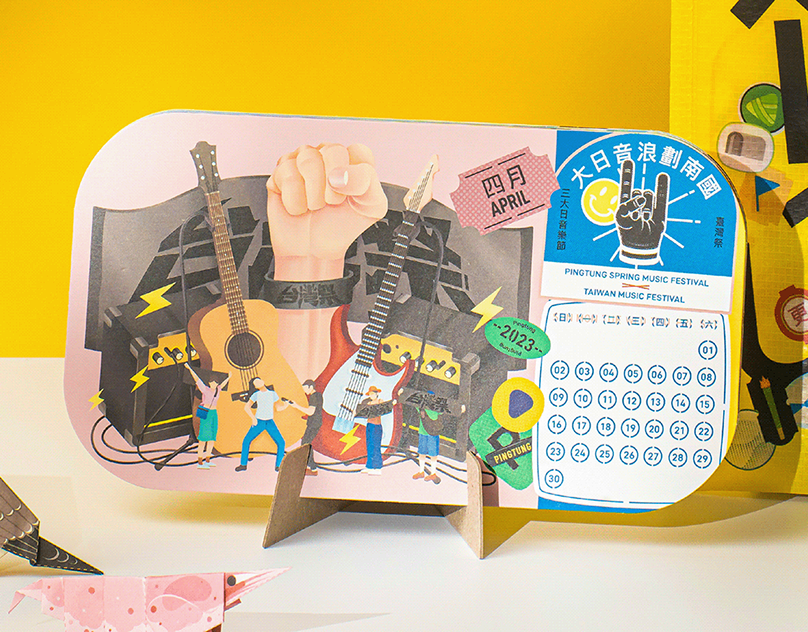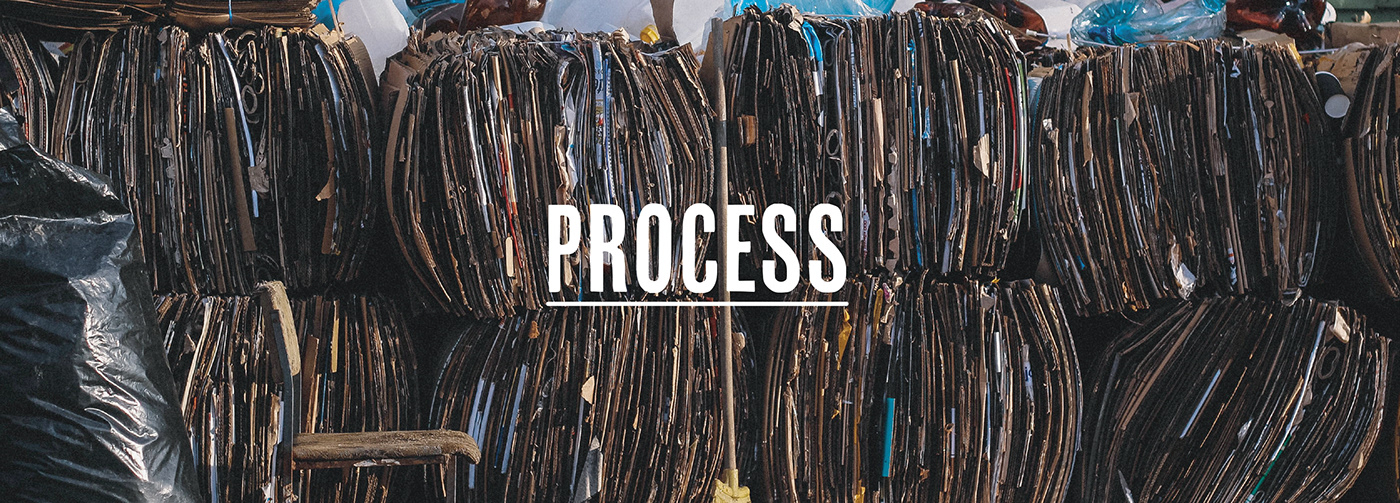
The assignment was to combine an activity of our choosing, with a specified material, PAPERPULP. The goal was to create a circular product in a world where mass consumption is a daily fact. The activity of my choice was CYCLING.
My end product is a CIRCULAR BICYCLE HELMET.

The first problem I faced after researching the subject of bicycle helmets was the REUSABILITY. A modern helmet has to be replaced after almost every crash. This makes it a one-time use product.
The second problem that surfaced was the RECYCLABILITY of those helmets. Almost all of the modern cycling helmets are made of foams that are glued together. This means that it's close to impossible to dismantle the helmet.
The finals problem was the WATERPROOFNESS of the material. Because paperpulp is not watertight there had to be way to create a paper helmet to be able to withstand the harsh conditions that a helmet has to endure like downpours and mudsplashes.
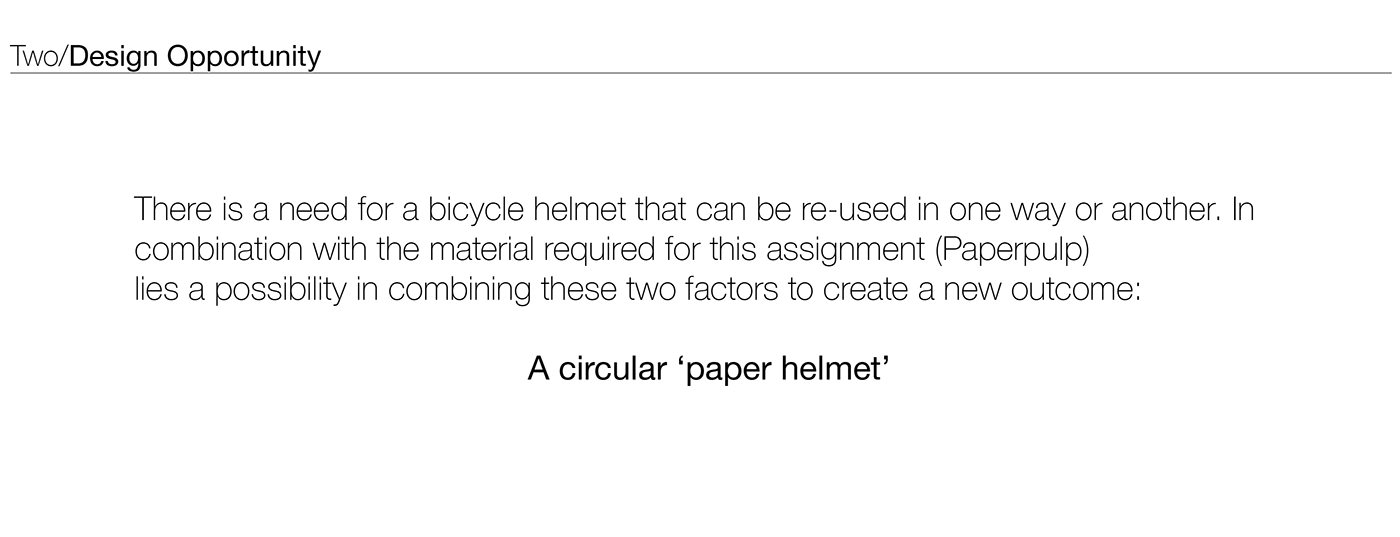

These are the four KEY SKETCHES that came forward through the design process. The final design is based on the sketch in the bottom left corner.


The helmet is build up in two parts: the paper protection shell & the cradle that fits the head of the cyclist. The paper part consists of two different types of paperpulp. Inside the paper part is a crash sensor embedded.
The first type is a softer, more foam-like paper. This part provides the most impact protection. The second part is the outer most shell, made of a harder & smoother type of paperpulp. These outer parts are wrapped in a decorative foil. This stickerfoil provides weather resistance and an opportunity for personalization.
These two types are friction fitted together. This makes disassembly easy.

The helmet is made to be split up in two parts after a fall. The paper part will be send back for recycling and a new protective shell can be ordered from the factory. This part can easily be clipped onto the head cradle.
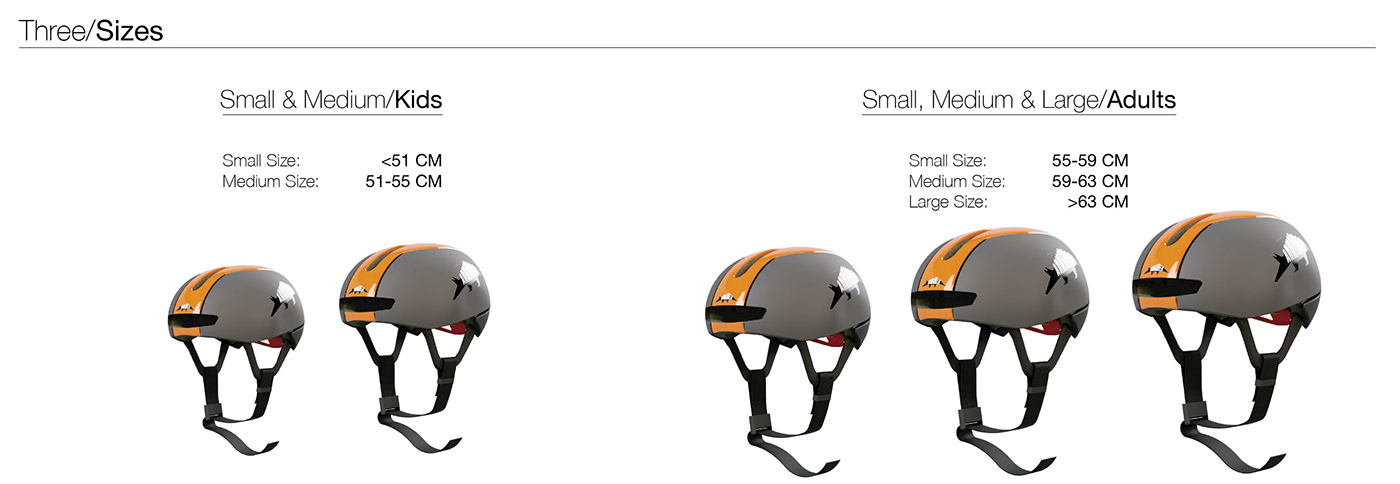
The helmet comes in Kids & Adult sizing. The sizes are based on the standard bicycle helmet sizes.
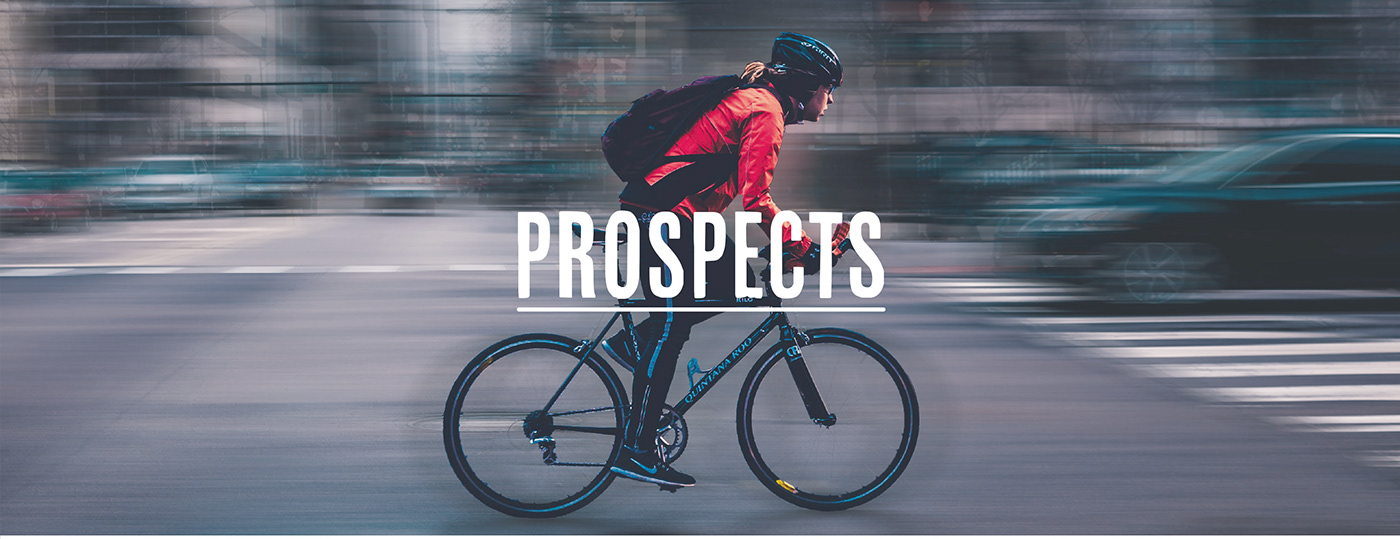
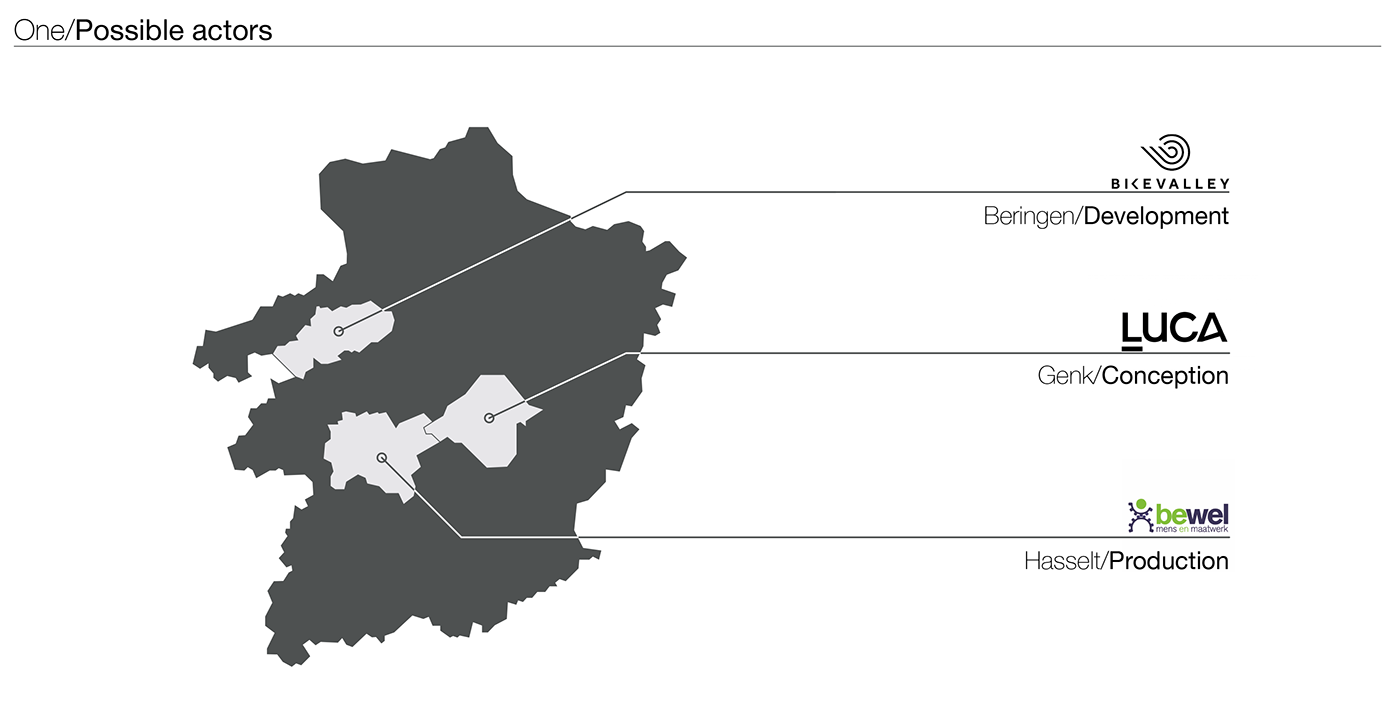
The three possible actors in this project are all three based in Limburg, Belgium.
The idea came from me, a student at the LUCA SCHOOL OF ARTS in Genk.
Further technical and aerodynamic development could possibly take place at the BIKEVALLEY incubator based in Beringen. Finally an assembly and production line can be set up at one of the BEWEL sheltered workshops based throughout Limburg.

Because smart and connected products are almost impossible to find nowadays, there was an extra interactive component added. The ARMADILLO APP links up with the embedded crash sensor in the helmet.
The app provides acces to buy & browse new products. On the 'My Products' page, you can view the status of your owned products, their colors and when they were purchased. And finally over at your profile you can enter your medical data and emergency contacts. These can be automatically called if an accident occurs while cycling, at the same time an SOS signal can be broadcasted to emergency services.

Why stop with the aspect of cycling in the helmet industry? Why not provide more types of helmets and convert more sectors into an eco-friendly business. Here is are a few examples of sectors that could possibly be tackled...
